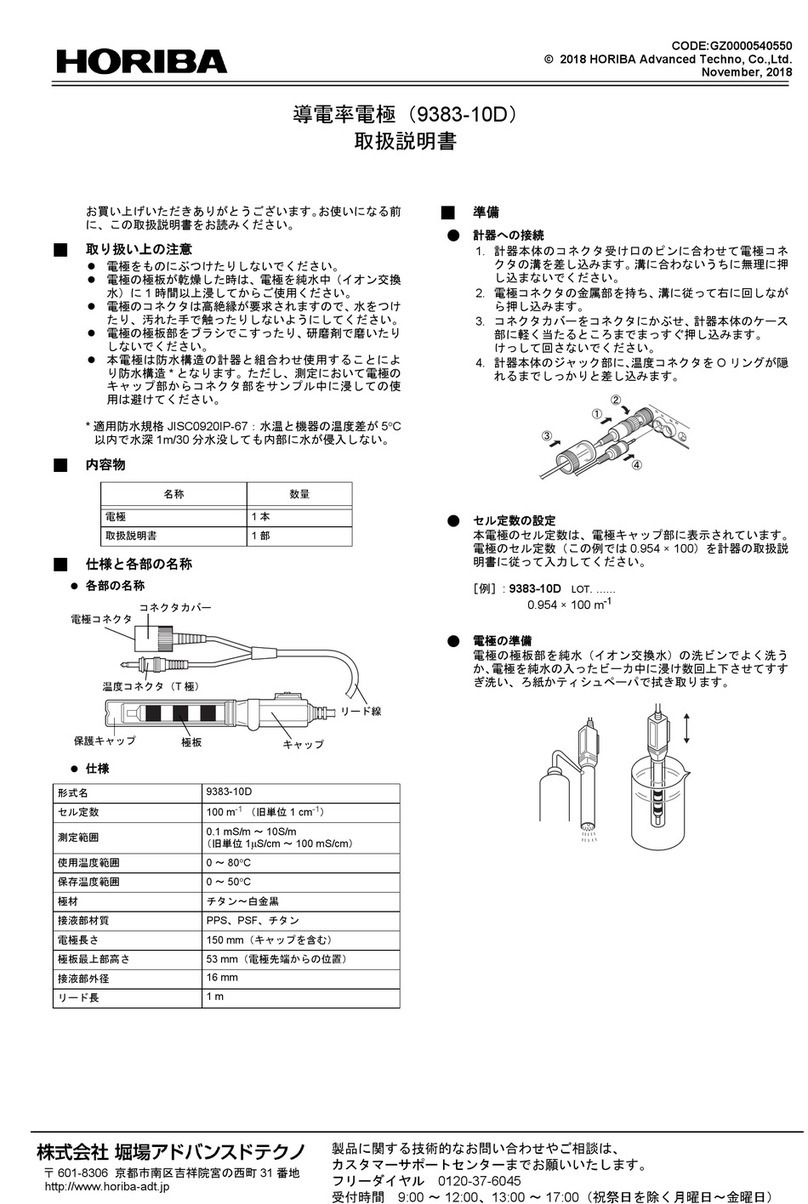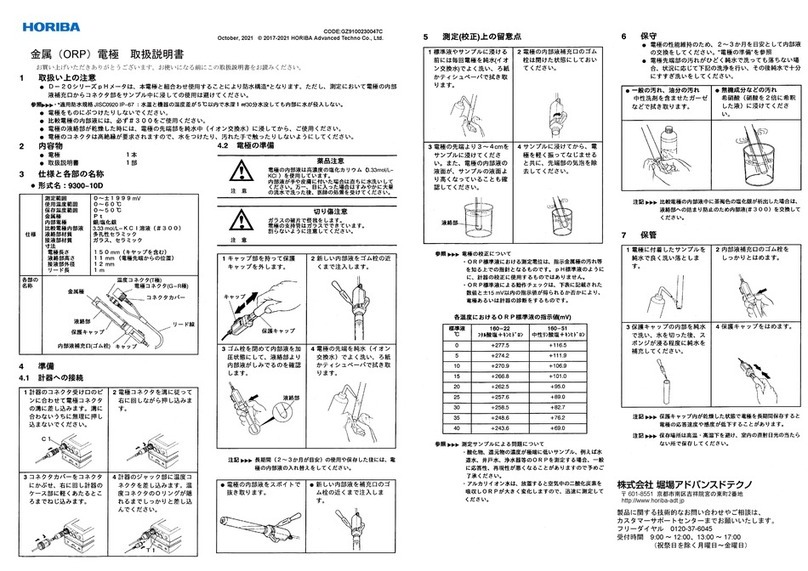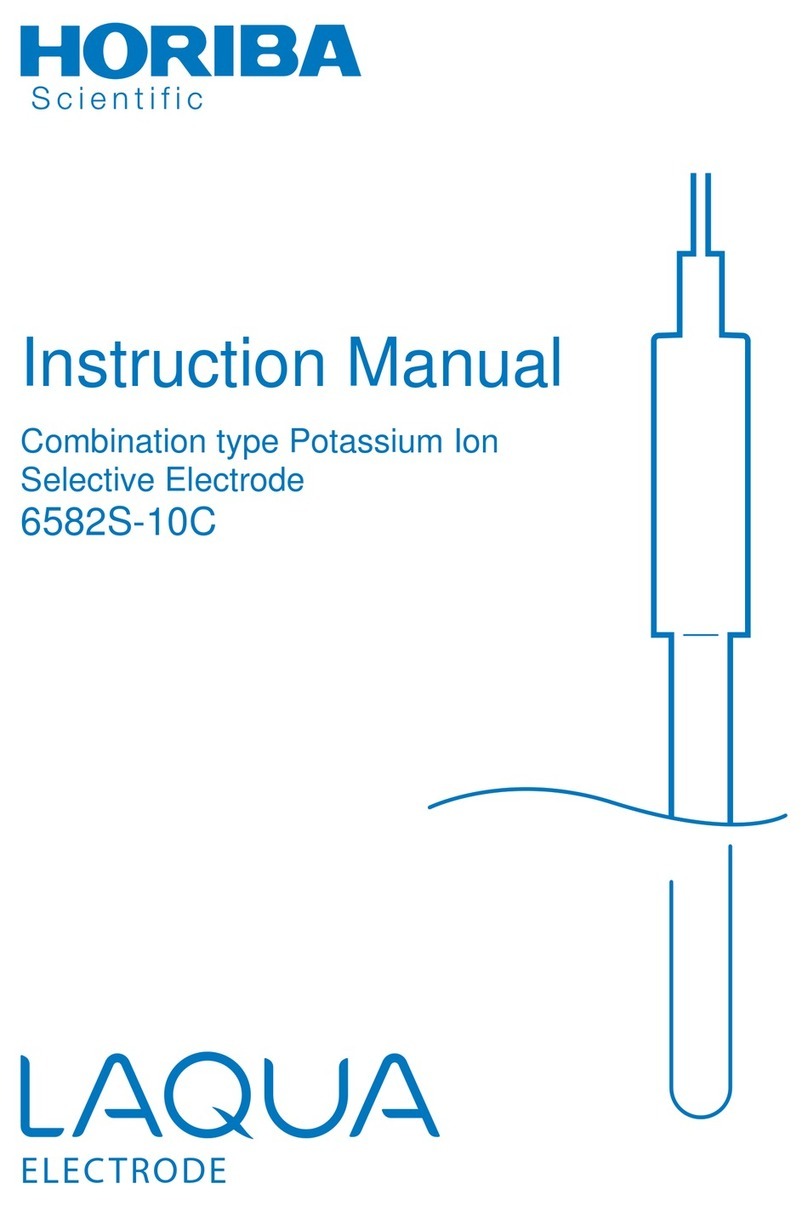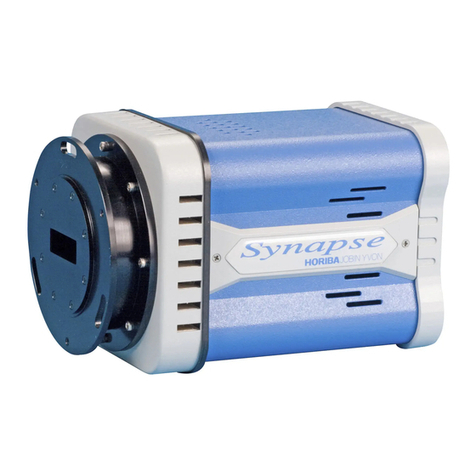
May, 2015 © 2015 HORIBA Advanced Techno, Co., Ltd.
Preface
This manual describes the operation of the pH detector for pure water measurement, HP-8A.
Be sure to read this manual before using the product to ensure proper and safe operation of
the product. Also safely store the manual so it is readily available whenever necessary.
Product specifications and appearance, as well as the contents of this manual are subject to
change without notice.
Warranty and responsibility
HORIBA Advanced Techno, Co., Ltd. warrants that the Product shall be free from defects in
material and workmanship and agrees to repair or replace free of charge, at option of HORIBA
Advanced Techno, Co., Ltd., any malfunctioned or damaged Product attributable to
responsibility of HORIBA Advanced Techno, Co., Ltd. for a period of one (1) year from the
delivery unless otherwise agreed with a written agreement. In any one of the following cases,
none of the warranties set forth herein shall be extended;
Any malfunction or damage attributable to improper operation
Any malfunction attributable to repair or modification by any person not authorized by
HORIBA Advanced Techno, Co., Ltd.
Any malfunction or damage attributable to the use in an environment not specified in this
manual
Any malfunction or damage attributable to violation of the instructions in this manual or
operations in the manner not specified in this manual
Any malfunction or damage attributable to any cause or causes beyond the reasonable
control of HORIBA Advanced Techno, Co., Ltd. such as natural disasters
Any deterioration in appearance attributable to corrosion, rust, and so on
Replacement of consumables
HORIBA Advanced Techno, Co., Ltd. SHALL NOT BE LIABLE FOR ANY DAMAGES
RESULTING FROM ANY MALFUNCTIONS OF THE PRODUCT, ANY ERASURE OF DATA,
OR ANY OTHER USES OF THE PRODUCT.
Trademarks
Company names and brand names are either registered trademarks or trademarks of the
respective companies. (R), (TM) symbols may be omitted in this manual.
































